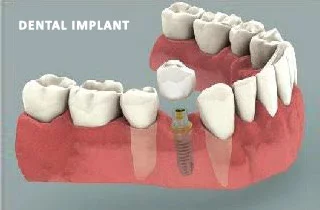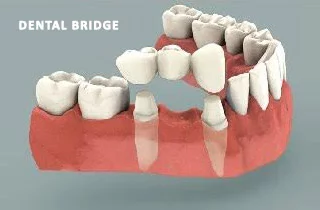Are you considering an implant or bridge, but don’t know which solution would be optimal in your case? This article is aimed at people who want to replace one or more missing teeth and are unsure whether a dental implant or a dental bridge is the better solution for them. 
- Which is better, a bridge or an implant?
- Can I switch from bridge to implant?
- So, which one should you choose?
Which is better, a bridge or an implant?
Whether a dental bridge or a dental implant is better depends on your specific situation — both have pros and cons.
What is a dental implant? – modern, permanent solution
A dental implant is an artificial tooth root made of biomaterial that is inserted into the gap of a lost or to-be-removed tooth. The dental implant supports the carefully planned dental prosthesis. The material of dental implants is usually pure, unalloyed titanium. Titanium is considered biocompatible and is well tolerated by most people. However, if you have an existing metal allergy, you should discuss this with your dentist.”
What are the advantages of implants?

- “Longer durability (15–25+ years or longer)”
- Preserves the jawbone (prevents bone loss)
- Does not affect adjacent teeth
- Feels and functions like a natural tooth
- Easier to clean (like a normal tooth)
The disadvantages of implants
- Implants may be initially more expensive, but they may offer a cost-effective solution over the years due to their longer durability.” More about dental implants costs
- Minor surgical procedure required
- Healing time: 3–6 months until complete integration
- Not ideal with insufficient bone (without transplantation)
What is a dental bridge? – faster, more affordable option
A dental bridge consists of two or more connected crowns. One or two of them bridge one or even two gaps. The crowns at the two ends of a bridge are supported by natural teeth or dental implants. Typically, a dental bridge is fixed with screws or cemented. With telescopic crowns as anchors, the dental bridge can also be removable.
What are the advantages of a dental bridge?

- Faster (often completed in 1–2 weeks)
- Lower acquisition costs. More about dental bridge cost
- Non-surgical
What are the disadvantages of dental bridge?
- Adjacent healthy teeth must be ground down
- Bone loss under missing teeth is not prevented
- Shorter lifespan (typically 5–15 years)
- More difficult to clean under the bridge
Can I switch from a bridge to an implant?
When switching from a bridge to an implant is possible
You could be a suitable candidate if:
- You’re in good general and oral health
- You have enough bone volume at the site
- The adjacent teeth are still healthy and stable
- You want a more permanent, independent solution
What needs to be considered
| Factor | Explanation |
|---|---|
| Bone Health | A bridge doesn’t stimulate the bone, so over time, the bone under the missing tooth may shrink. If there’s a significant loss, a bone graft may be needed. |
| Bridge Removal | The existing bridge must be carefully removed. If the adjacent teeth were shaved down for crowns, They may need to be restored separately. |
| Gum Condition | Healthy gums are essential for implant placement and healing. |
| Healing Time | Implants typically require a healing period (osseointegration) of 3–6 months before placing a crown. |
So, which one should you choose?
| If You… | Better Option |
|---|---|
| Want a long-term solution | Implant |
| Have healthy teeth nearby | Implant |
| Have multiple missing teeth | Bridge or implant-supported denture |
| Want to avoid surgery | Bridge |
| Have budget limitations | Bridge (short-term), Implant (investment) |
| Have bone loss | Bridge or Implant with bone graft |


